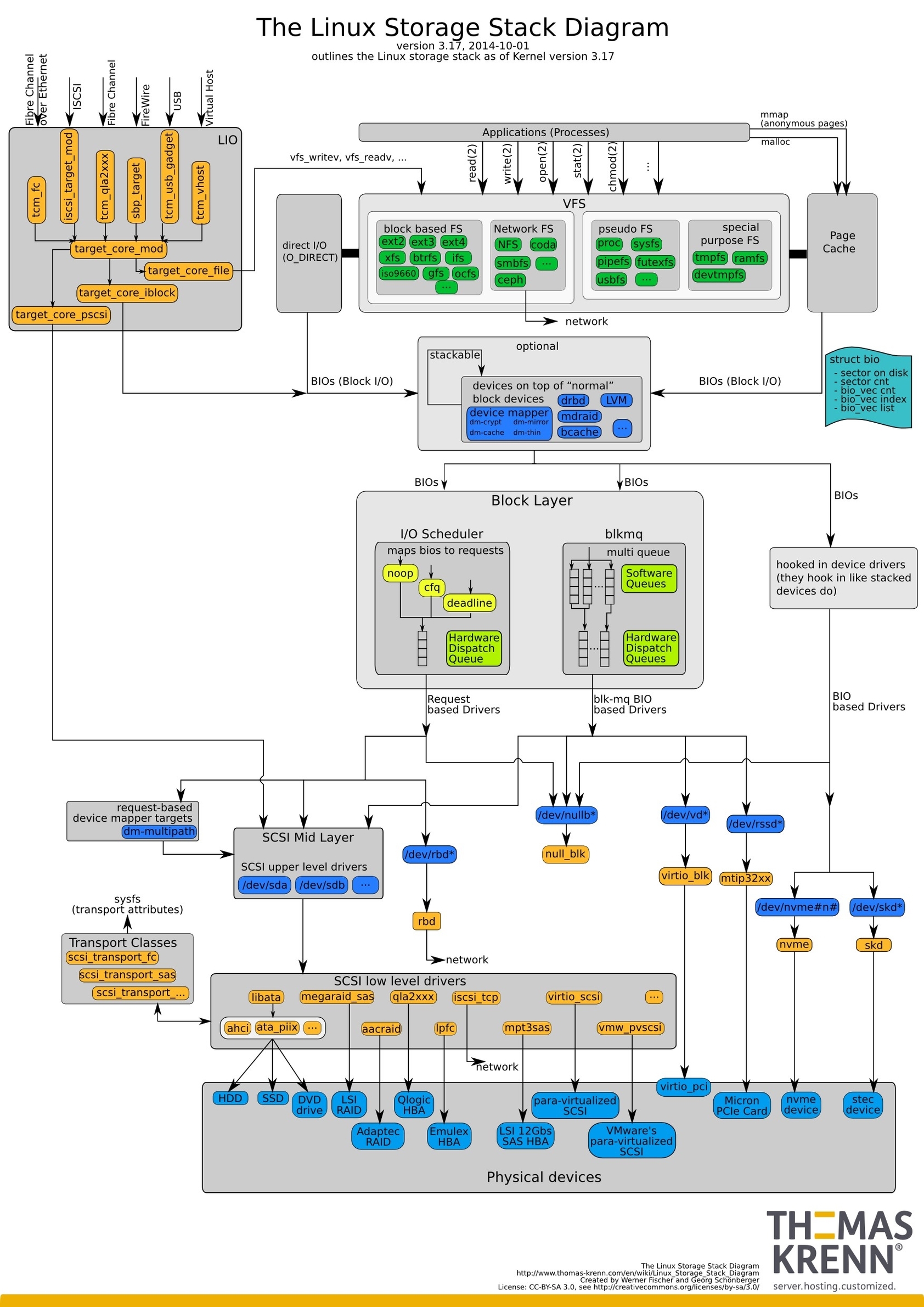
The Linux Storage Stack is a layered architecture that provides a unified interface for accessing storage media in Linux-based systems. The stack is designed to abstract the underlying hardware and provide a consistent interface to applications, while also providing a high degree of flexibility and configurability.
At the bottom of the stack is the block layer, which provides a generic interface for accessing block devices such as hard disks, solid-state drives, and USB drives. The block layer is responsible for handling I/O requests, caching data, and scheduling requests for optimal performance.
Above the block layer is the filesystem layer, which provides a logical view of the storage media to applications. The filesystem layer is responsible for organizing data into files and directories, and for managing access to these files.
The virtual file system (VFS) layer sits on top of the filesystem layer and provides a unified interface for accessing different types of filesystems. The VFS layer is responsible for handling system calls related to file I/O, such as `open()`, `read()`, and `write()`, and for translating these calls into the appropriate operations for the underlying filesystem.
The I/O scheduler is a component of the block layer that is responsible for optimizing the order in which I/O requests are processed. The scheduler uses various algorithms to reorder requests based on factors such as the location of data on the disk, the size of the request, and the priority of the process making the request.
The device mapper is a component of the block layer that provides a framework for creating virtual block devices. The device mapper can be used to create logical volumes, which are virtual block devices that span multiple physical devices, and to create snapshots, which are read-only copies of a block device at a particular point in time.
The storage area network (SAN) layer provides a framework for accessing storage devices over a network. The SAN layer is responsible for handling the low-level details of network communication, such as packet fragmentation and reassembly, and for providing a unified interface for accessing remote storage devices.
The network block device (NBD) driver is a component of the SAN layer that provides a way to access remote block devices as if they were local. The NBD driver works by creating a virtual block device that is backed by a remote block device over the network.
The network file system (NFS) is a component of the VFS layer that provides a way to access remote filesystems as if they were local.
